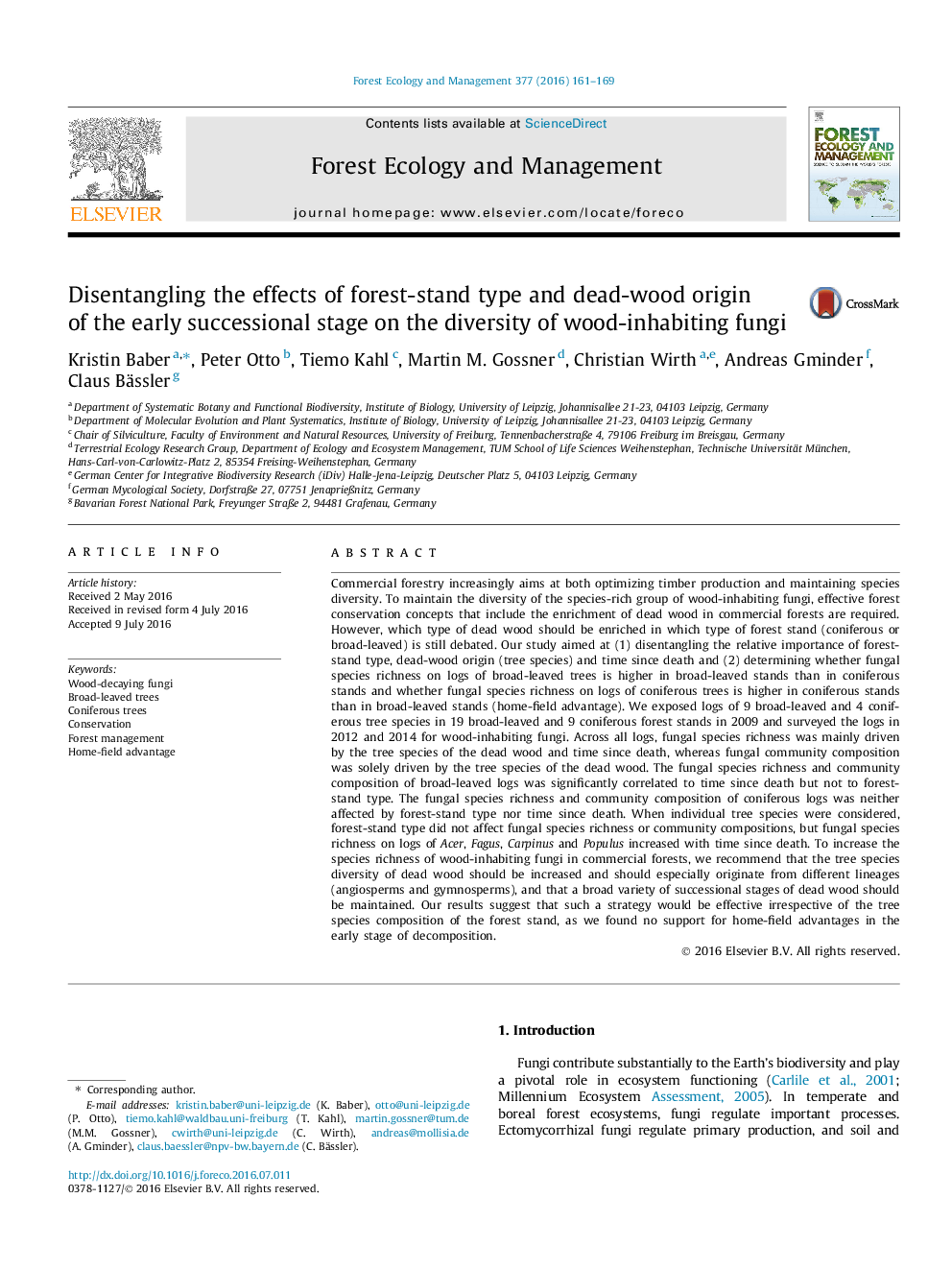| Article ID | Journal | Published Year | Pages | File Type |
|---|---|---|---|---|
| 6542081 | Forest Ecology and Management | 2016 | 9 Pages |
Abstract
Commercial forestry increasingly aims at both optimizing timber production and maintaining species diversity. To maintain the diversity of the species-rich group of wood-inhabiting fungi, effective forest conservation concepts that include the enrichment of dead wood in commercial forests are required. However, which type of dead wood should be enriched in which type of forest stand (coniferous or broad-leaved) is still debated. Our study aimed at (1) disentangling the relative importance of forest-stand type, dead-wood origin (tree species) and time since death and (2) determining whether fungal species richness on logs of broad-leaved trees is higher in broad-leaved stands than in coniferous stands and whether fungal species richness on logs of coniferous trees is higher in coniferous stands than in broad-leaved stands (home-field advantage). We exposed logs of 9 broad-leaved and 4 coniferous tree species in 19 broad-leaved and 9 coniferous forest stands in 2009 and surveyed the logs in 2012 and 2014 for wood-inhabiting fungi. Across all logs, fungal species richness was mainly driven by the tree species of the dead wood and time since death, whereas fungal community composition was solely driven by the tree species of the dead wood. The fungal species richness and community composition of broad-leaved logs was significantly correlated to time since death but not to forest-stand type. The fungal species richness and community composition of coniferous logs was neither affected by forest-stand type nor time since death. When individual tree species were considered, forest-stand type did not affect fungal species richness or community compositions, but fungal species richness on logs of Acer, Fagus, Carpinus and Populus increased with time since death. To increase the species richness of wood-inhabiting fungi in commercial forests, we recommend that the tree species diversity of dead wood should be increased and should especially originate from different lineages (angiosperms and gymnosperms), and that a broad variety of successional stages of dead wood should be maintained. Our results suggest that such a strategy would be effective irrespective of the tree species composition of the forest stand, as we found no support for home-field advantages in the early stage of decomposition.
Related Topics
Life Sciences
Agricultural and Biological Sciences
Ecology, Evolution, Behavior and Systematics
Authors
Kristin Baber, Peter Otto, Tiemo Kahl, Martin M. Gossner, Christian Wirth, Andreas Gminder, Claus Bässler,
